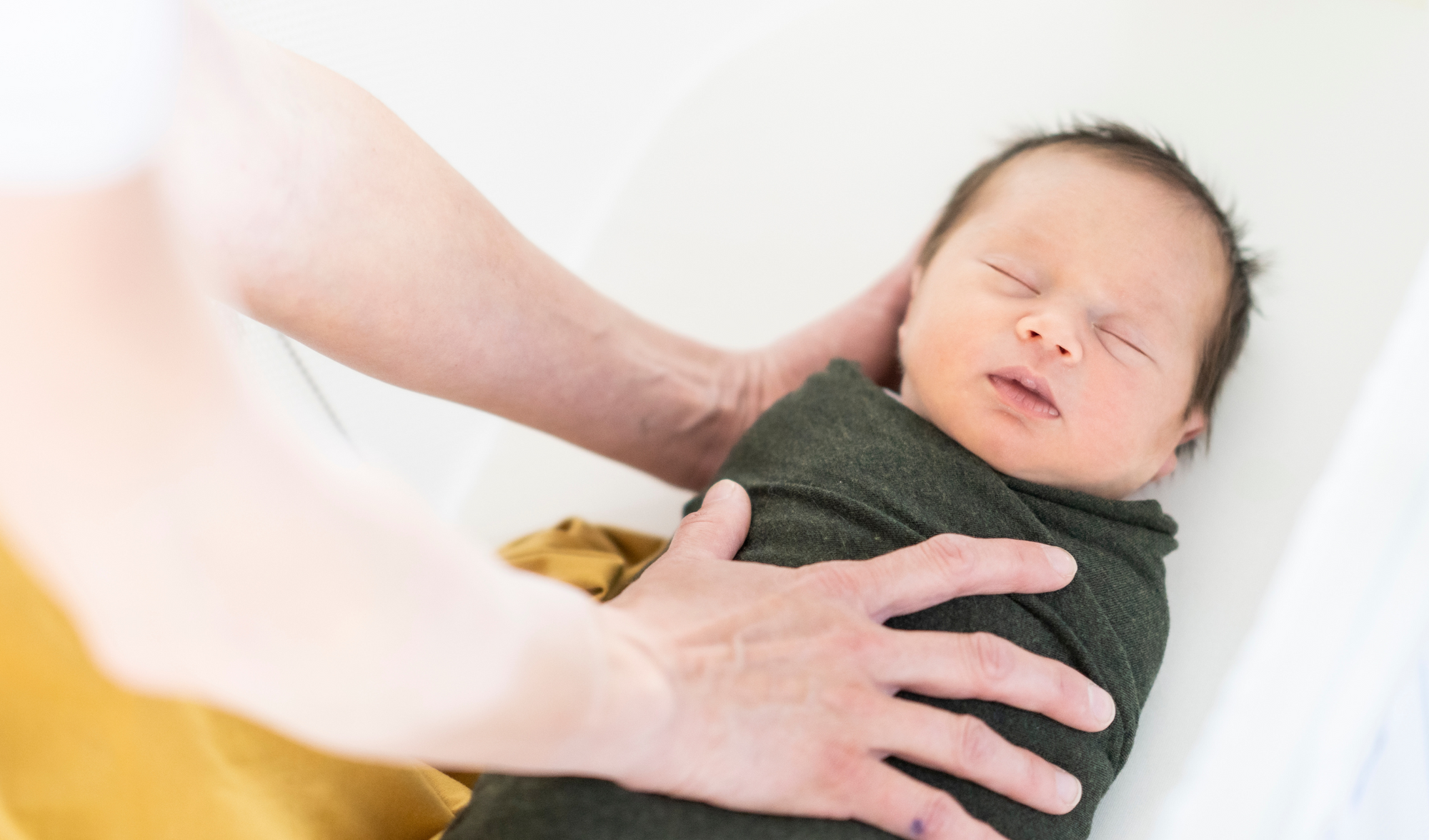You can breastfeed your baby in numerous positions. When your firstborn comes along, breastfeeding is new to you so you might want to try out some positions to figure out which are most comfortable.
As you become more confident with breastfeeding, you can then experiment with different positions. Before you know it, you will find the one that works best for you and your baby.
Common Breastfeeding Positions
1. The laid-back nursing position
If you’re finding breastfeeding difficult, the laid-back nursing position is a great one to try. When it is time to feed, lie back on a comfy sofa or bed. Don't lie completely flat on your back, but instead prop yourself into a semi-reclining position using pillows and cushions. The pillows will help support your back, neck, and shoulders, as well as reducing the amount of gaps between your and your baby, and also helping to ensure they connect with you physically.
When you're comfortable, hold your baby with their belly touching yours and their head level with your breast. They will begin to smell or feel their way to your nipple and latch on. You can help by positioning and supporting their body, guiding their mouth to the correct position on your breast or just having a snuggle with them.
2. The cradle hold/cross cradle hold
This is probably the most popular position for early breastfeeding. Sit up straight in a comfortable chair and bring your baby across the front of your body so that you are tummy to tummy, if this is difficult try adding a pillow to your lap to help support your baby. Hold your baby in the crook of your arm which is opposite the breast you are feeding with. Support the back of the baby’s head with your open hand and use the other hand to support your breast from the underside in a U shape.

3. The rugby ball position
The rugby ball hold is the breastfeeding position that most mothers find the most comfortable, and is especially helpful if you happened to have a cesarean birth. To achieve this position, place a pillow next to you. Cradle your baby facing upward in your arm. Using the palm of your hand on that same arm to support his or her neck, nestle your baby's side closely against your side. Your baby's feet and legs should be tucked under your arm. Then lift your baby to your breast.
4. The side-lying position
The side-lying position is great when you're tired and want to nurse while lying down. It's a very natural choice for night-time feedings. Start by lying on your side with your baby facing you on their side. Your baby should be positioned so that their nose is opposite your nipple. Use your lower arm to cradle your baby's back, while your other arm supports your head. You can support your breast with your other hand. For optimal feeding, make sure that your breast is placed deep into your baby’s mouth.

Signs of Good Positioning When Breastfeeding
Ensuring the correct positioning and attachment is vital for successful breastfeeding as this makes it much easier for your baby to feed. While finding the position that works best for you and your baby is something akin to trial and error, there are a few signs to look out for to make sure your positioning is working well for your little one:
- While your nipples may feel tender or sensitive, they should not be sore.
- Your baby feeds calmly rather than moving on and off your breast.
- They should have a relatively wide mouthful of your breast in their mouth.
- Their lower lip is curled outward.
- Their chin is touching your breast.
- You should see their jaw moving.
- You should be able to hear them swallowing with no clicking or smacking sounds.
- Your baby’s cheeks are both full and rounded.

When Should You Unlatch?
No need to worry about unlatching your baby yourself, in fact you shouldn’t have to do this. When your little one is done nursing, they’ll naturally detach themselves from your breast. Your baby will either drift off to dreamland or move away from your breast when they feel satisfied. Just let them do their thing!
By using different holds, you will allow your baby to drain the different areas of your breasts more effectively and avoid clogged milk ducts. Always remember to keep your baby’s body and head facing the same direction, do not hunch your body over your baby, and make sure your baby’s body is never too far away from your breast.
Related blogs:


